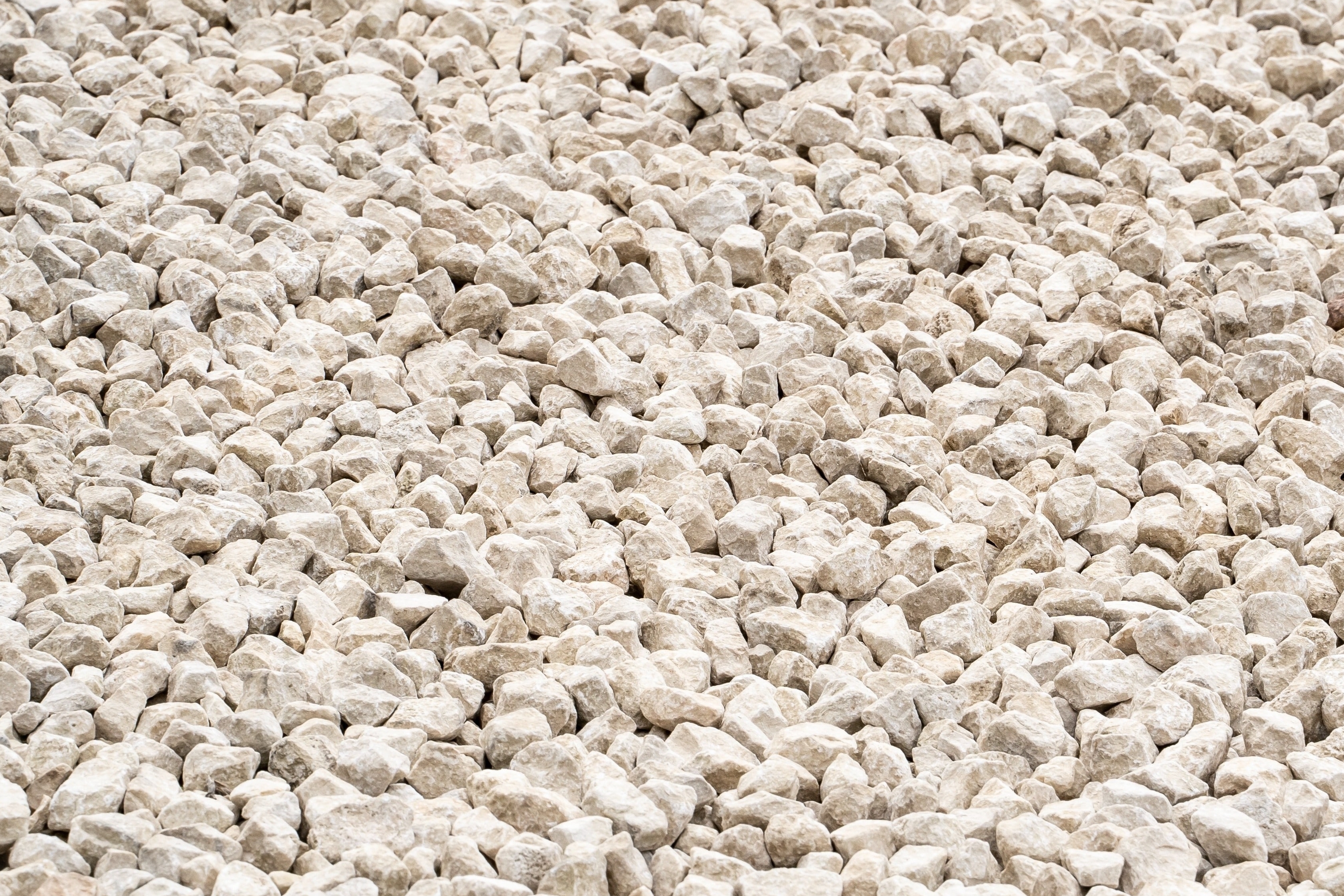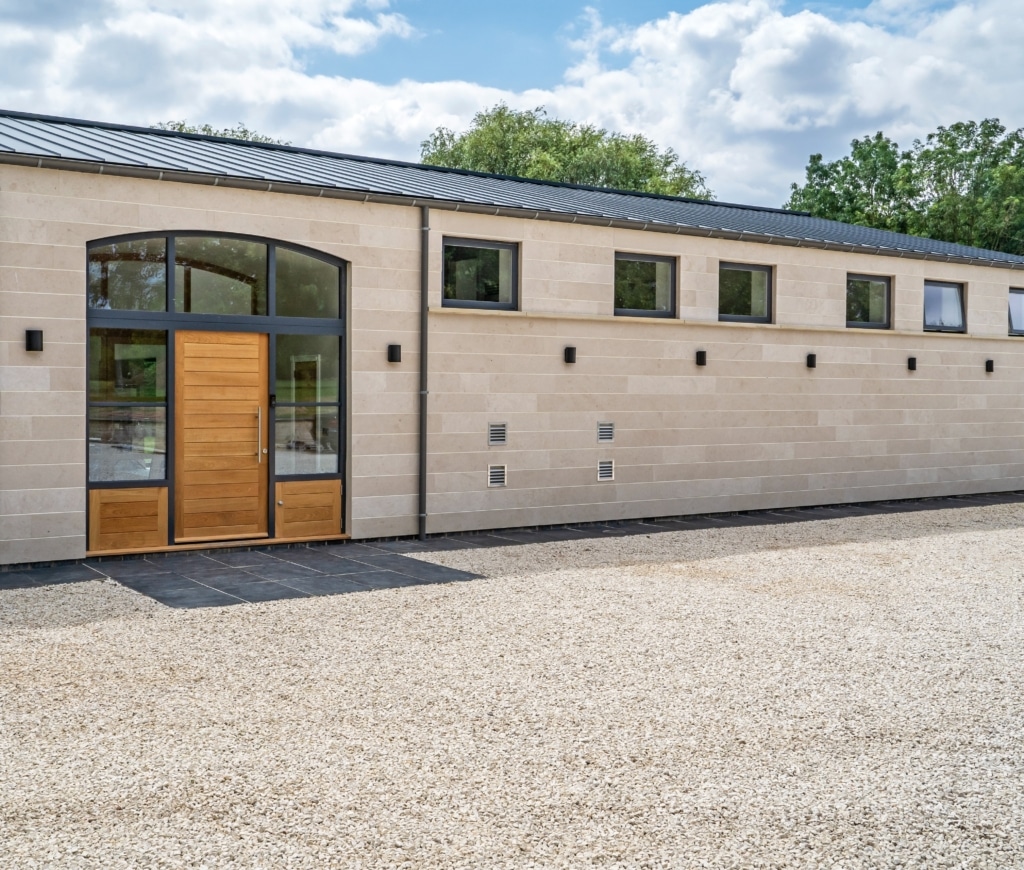
A lighter version of the yellow self-binding gravel, this option offers the same firm finish but with a cleaner, pale appearance. It’s often used in modern residential developments or where a softer, brighter aesthetic is preferred. Like the yellow version, it forms a hard-wearing surface without the need for a separate top dressing.
Golden Gravel is a decorative loose aggregate made up of flint and quartz. It features a natural mix of golds, ambers, and browns, making it one of the most visually striking choices. This type doesn’t bind like the self-binding options, so it works best with proper edging to keep it in place. It’s commonly used for domestic driveways where aesthetic impact is just as important as performance.
This is a classic choice for driveways that need a traditional or rustic finish. Made from pale yellow limestone, it blends perfectly with countryside surroundings and period properties. While it’s a loose gravel like Golden Gravel, its angular shape helps it stay in place better than rounded alternatives.
When choosing gravel for a driveway, 20mm angular gravel is generally the most suitable option. Its size and shape make it ideal for creating a firm, stable surface that resists movement under the weight of vehicles. Unlike smaller 10mm gravel, which can shift more easily and get stuck in tyre treads, 20mm gravel offers better grip and durability.
It’s also more comfortable to walk on compared to larger or more uneven stones. Avoid using rounded pea shingle for driveways—it doesn’t lock together well, shifts frequently, and lacks the compacting strength needed for high-traffic areas.
Not sure how much gravel your project requires? Take a look at our guide: “How to calculate the amount of gravel you need for your project.”

Creating a durable gravel driveway starts with a strong and well-prepared base. To ensure long-term performance, begin by laying 100–150mm of compacted MOT Type 1 sub-base. This forms a stable foundation to support regular vehicle traffic and prevents uneven sinking over time. On top of this, apply your chosen gravel to a finished depth of approximately 50–60mm. If you’re using self-binding gravel, such as Breedon or similar products, this will form the surface layer and naturally compact to create a more cohesive finish.
For decorative or loose stone types like Cotswold Buff or Golden Gravel, consider incorporating stabilisation grids or installing clear edging. These additions help keep the gravel in place, reduce spreading, and maintain a tidy appearance over time—particularly useful for sloped driveways or high-use areas.
Don’t forget to include a geotextile membrane beneath the sub-base. This often-overlooked step is vital: it suppresses weed growth, separates the gravel from the soil, and prevents the layers from mixing. This simple layer can significantly enhance the lifespan and visual appeal of your driveway.
| Gravel Type | Appearance | Surface Type | Best Suited For | Maintenance |
|---|---|---|---|---|
| Yellow Self-Binding | Warm golden | Compacted finish | Country properties, estates, footpaths | Low |
| Cream Self-Binding | Pale, clean tone | Compacted finish | Contemporary homes, private roads | Low |
| Golden Gravel | Mixed warm tones | Loose aggregate | Decorative driveways with edging | Medium |
| Cotswold Yellow Gravel | Creamy traditional tone | Loose aggregate | Period properties, rural homes | Medium |
To reduce gravel movement and maintain a clean, structured look, always choose angular gravel over rounded options like pea shingle. Angular stones interlock more effectively, offering better stability underfoot and beneath vehicle tyres. Combined with well-installed edging—such as stone setts, timber, or metal restraints—this helps preserve the shape of your driveway and prevents gravel from spreading into surrounding areas.
For driveways using loose decorative gravel, adding stabilisation grids is a smart choice. These grids reinforce the surface, limit displacement, and reduce the development of ruts or uneven patches—especially in areas that experience frequent traffic or turning.
A weed-suppressing membrane beneath the gravel is essential for long-term maintenance. It blocks weed growth from below and prevents gravel from mixing with the sub-base. However, occasional surface weed control may still be needed, particularly if seeds settle in the gravel from above.
To keep your driveway looking its best, rake or brush the surface periodically. This helps smooth out tyre tracks, redistribute scattered stones, and restore an even finish. If you’ve opted for self-binding gravel, maintenance is minimal—occasional re-compaction or topping up in high-traffic areas is usually all that’s required.

At Stoneworld, we often recommend self-binding gravel for driveways where durability and low maintenance are key priorities. Its natural compaction creates a firm, stable surface that resists movement and requires minimal ongoing care—ideal for both rural and modern properties.
If you’re after a more decorative finish, options like Golden Gravel or Cotswold Chippings bring colour, texture, and a more traditional aesthetic. When installed with care and supported by edging or stabilisation grids, these gravels offer both visual appeal and lasting performance.
Each type of gravel has its advantages, and the right choice depends on your driveway’s usage, the look you want to achieve, and how much time you’re willing to spend on maintenance. Our team can help you decide what’s best for your space.
We’re happy to offer expert advice and samples to help with your selection. Visit our Oxfordshire showroom, contact our team to discuss bulk orders, or browse our full gravel range online.
Please call us on 01844 279274 or email us at sales@stoneworld.co.uk for any further advice you require. Our knowledgeable staff are always on hand for tips and advice. Alternatively, you can fill in the enquiry form below and one of our team will be in touch shortly.
You can also book a visit to our showroom here.
Last updated: 16/08/2024